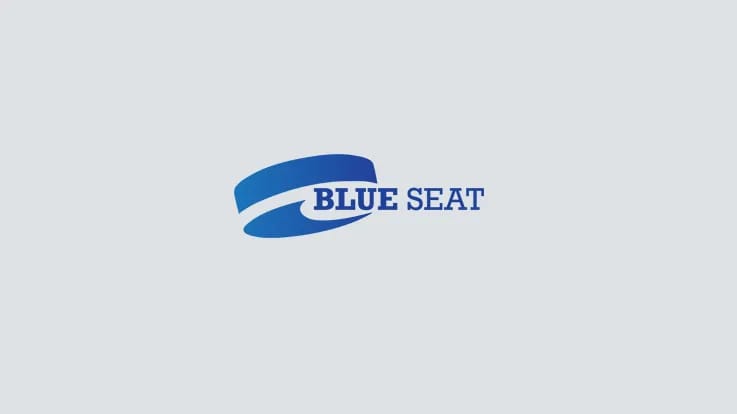
For the second year in a row, Chris Drury and the New York Rangers seemingly have a better on-paper roster than before the trade deadline as they pine for an extended spring of hockey. While the path to get there required some roster and cap maneuvering, ultimately they have chosen a direction to try to solve their perceived problems with players that, as noted in prior NY Rangers trends reviews, proved long ago they could win in the crucial moments.
I am not here to argue the cap-crunched roster is worse than a month ago. Although looking at recent NY Rangers trends the past few weeks could be billed as a fool’s errand, given that they haven’t played with a full roster for two weeks now, it is still key to understand where the Rangers are and where they need to be. This is where the title comes into play; the Rangers and especially Gerard Gallant (and his staff) badly needs to understand the assignment at hand.
Overall NY Rangers trends
Like last year, the formula is straightforward: be good enough at 5v5 NHL hockey to trade chances with teams that drive offense at higher rates, generate & convert a ton of offense on the power play, and hope to God Igor Shesterkin cleans up the rest. If all three click at once, they’re an elite team in the league. Two of three? They’ll be in games, but it won’t be pretty. One or none of three? Move onto whatever show you’ve been trying to find time for.

The Rangers survived the month of February via hot team shooting at 5v5 and their typical defense in limiting shots and scoring chances (expected goals against aka xGA) to an average level. While NY Rangers trends show they have been able to generate more scoring chances while getting fewer shot attempts, we know from 15 years of data that is not a long-term correlation, seeing as Corsi is a proxy for where the puck is.
Overall it is telling that of the three best months of 5v5 Goals For % so far this season, two of them were when the Rangers were 11th or better at Corsi For %. But seeing as the Rangers haven’t had a full defense corps in five games, let’s focus on some micro-stats and, again, understanding the assignment by finding the best-balanced lineup to head into May.
Defensive zone exits are a problem
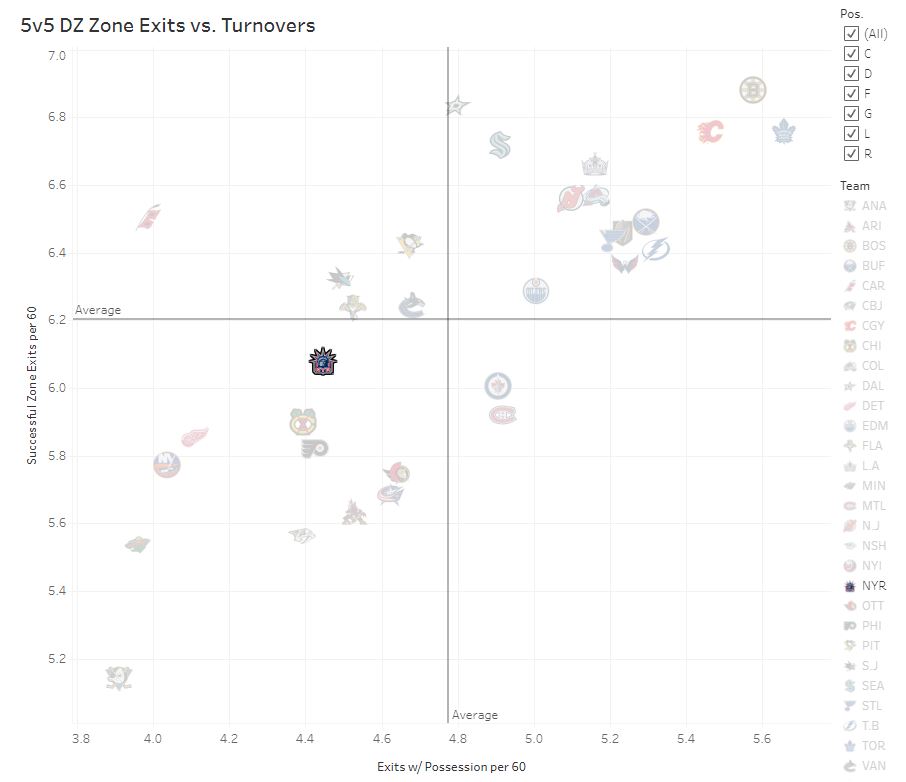
The Rangers are pretty decent at generating offense (more on that below) once they get out of their own zone. The part of that sentence to focus on is the latter – of playoff teams the Rangers are one of the worst teams in getting out of their own zone.
The above is from All Three Zones, which I highly suggest you subscribe to if you’re able. Essentially, the Rangers struggle to both exit the zone in general and do so with possession less than league average. Two years ago with the defense under Jacques Martin, that was different. They focused more on exiting the zone with possession as a unit using shorter passes.
Now, if you focus on the wingers, you’ll see they right away look to stretch the defense. This means either a stretch pass needs to be made (lower % choice) or a Rangers defender needs to skate it to an extent.
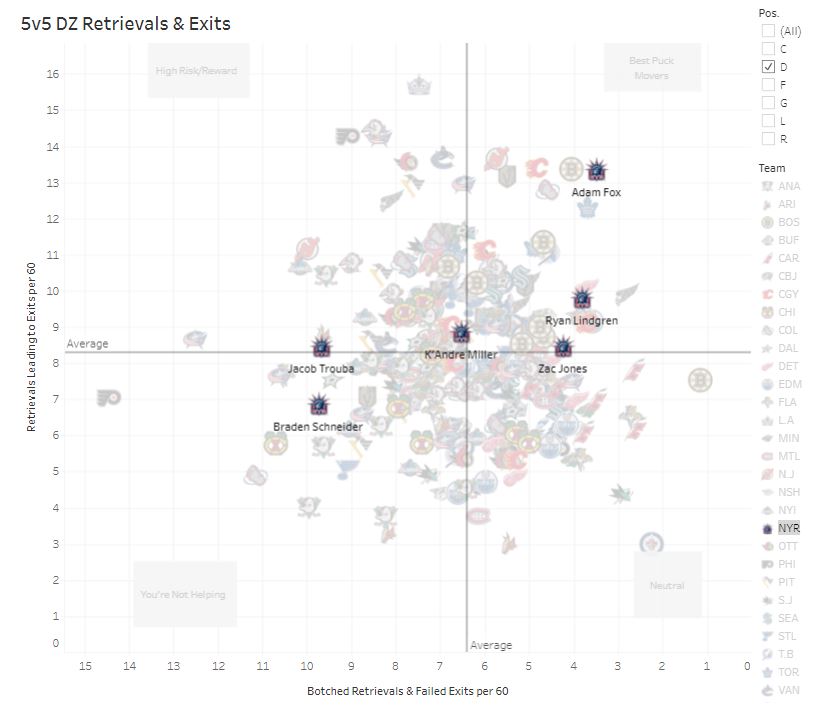
Overall, the issue is stemmed from both Jaocb Trouba and Braden Schneider struggling with exits all season. Miller does what he can with Trouba, but he’s still average, which is why we typically see the Rangers generating more offense when Ryan Lindgren-Adam Fox is on-ice.
Zac Jones, as you may notice, was doing quite well in at least limiting botched retrieval & failed exits, but because of other perceived deficiencies, it’s unlikely we’ll see him again this year. For what it’s worth, Niko Mikkola is essentially between Miller & Jones, so he’s naturally an upgrade on Harpur.
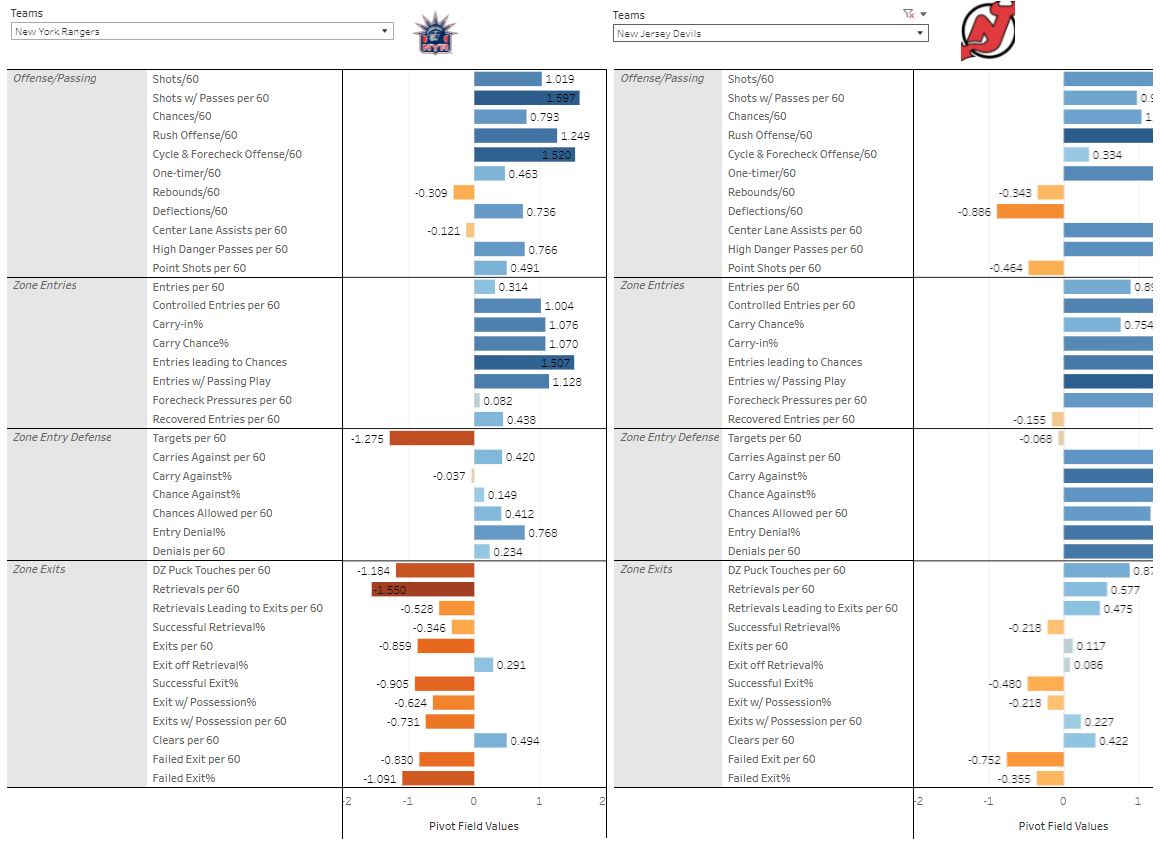
To bring it full circle, above is NYR’s team card compared to their likely first-round opponent at this point. As is obvious, zone exits are the clear weakness of the Rangers. Seeing as their defense options are etched in stone (including the pairs), the next best thing we can do is look to the forward combinations.
Can the forwards compensate?
While the primary NY Rangers trends topic has been to talk about Artemi Panarin and Vladimir Tarasenko and then Panarin and Patrick Kane, overall the more sustainable solution is to start with known good forward lines and go from there. From a shots, chances, and actual goals standpoint with some decent TOI (200+) at 5v5, that means your top line is Kreider-Zibanejad-Kakko.
From there, while many pine for Filip Chytil and Artemi Panarin to play together, statistically they haven’t yet proven over the course of two seasons (limited TOI) that they can consistently generate offense. That leaves Panarin and Trocheck to be your 2nd line.
In his 12 GP so far Tarasenko is the best fit to be their right winger. While their Goals For at 5v5 is 50% (2 for/2 against), their scoring chances are dominant – 30 for and 15 against (high dangers are 10-10, to be fair). That is good a good territorial win given recent NY Rangers trends.
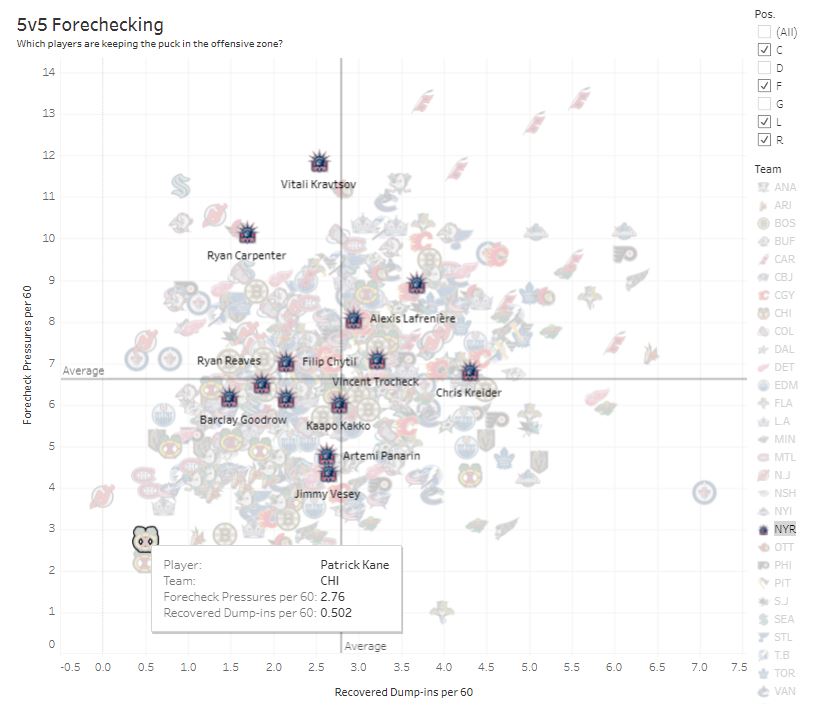
This would leave Lafrenière-Chtyil-Kane to be your third line with Motte-Goodrow-Vesey filling out the card. The Kid Line hasn’t been as effective of late and without Fox they’re an average NHL line at best. If you have any hesitation in giving Kane less minutes at 5v5, I beg you to reconsider.
While Kane is not the player he was even three years ago, he still is able to shoot & create chances via passing very well. As the above shows, he simply does not forecheck effectively anymore, so balancing him with one of the better pressure-players on the team in Lafrenière could provide good balance.
Will Shesterkin rebound?
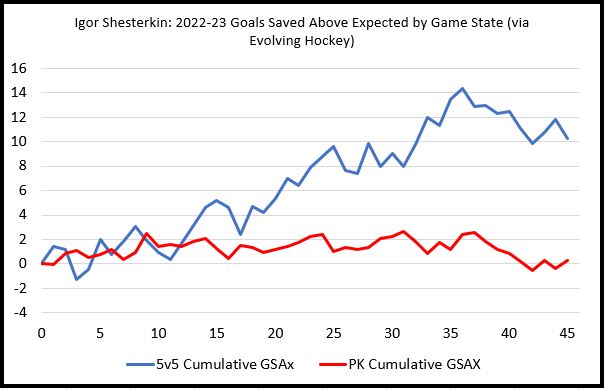
That all said, the above NY Rangers trends are all water under the fridge unless Igor Shesterkin begins to find better form. For a good 20 games Shesterkin was back to his MVP-level play of last year, however that unfortunately dissipated. I
included the penalty killing aspect because he was especially dominant there last year, and this year it has simply been average. I do not doubt Igor and nor should you, but if you’ve made it this far you already know that contending for a Stanley Cup requires hot goaltending.
Ultimately, this team has about four or so weeks to figure out how to become the best possibly 5v5 team they can with the players they have rostered – that is the assignment. The power play, while still generating at a top-3 level in the league, isn’t converting like last year. Shesterkin, as just noted, isn’t doing as much carrying either.
That means unless we’re just going to hope prevailing trends about-face because certain players were good together many years ago, finding balance in the lineup along with somehow improving zone exits should be the focus.
On 2/28 I said I’m in for the ride because, at the very least, the path Drury chose with Tarasenko and Kane does open up intriguing options. However, if those options aren’t explored very soon to allow some time to see if they can truly work, hope is never a real plan.
Note: Special thanks to David Lefcort in pointing out the Zone Exit trends related to NYR.
More About:Analysis
